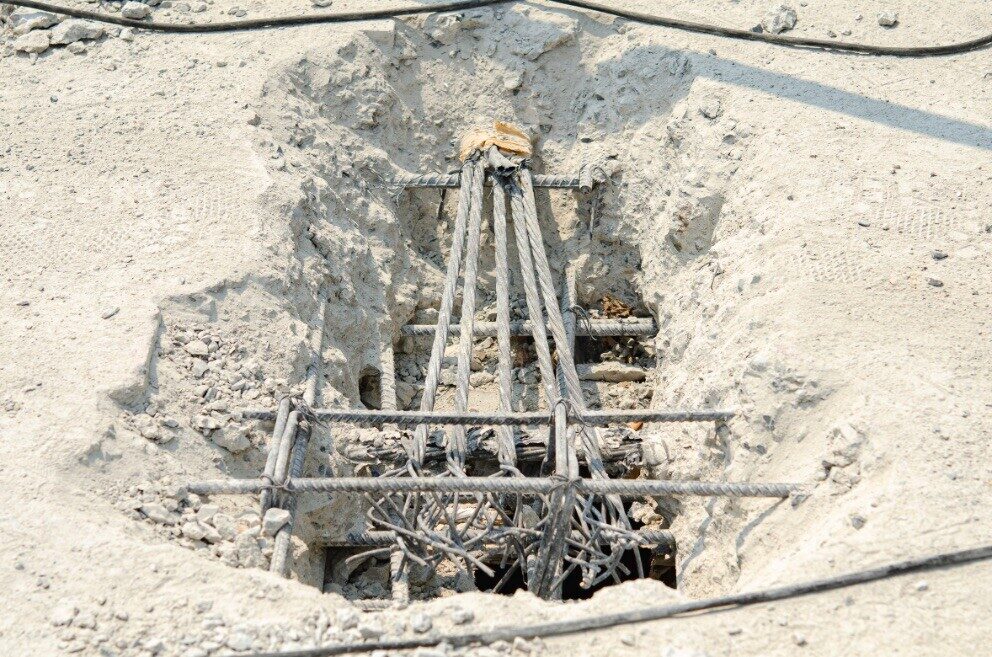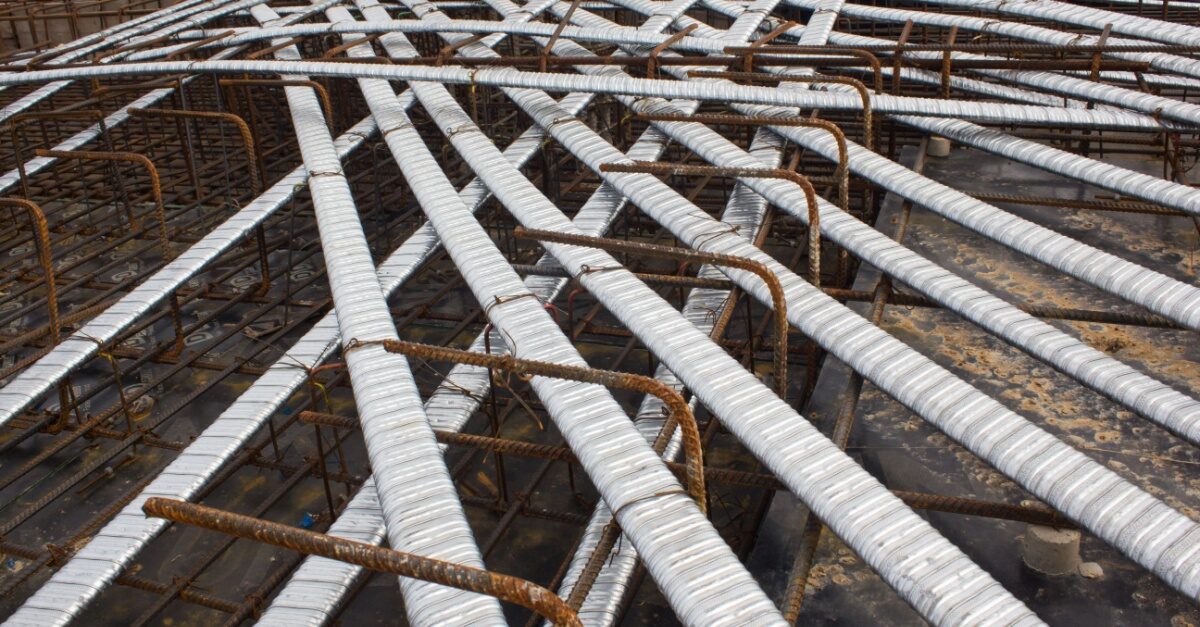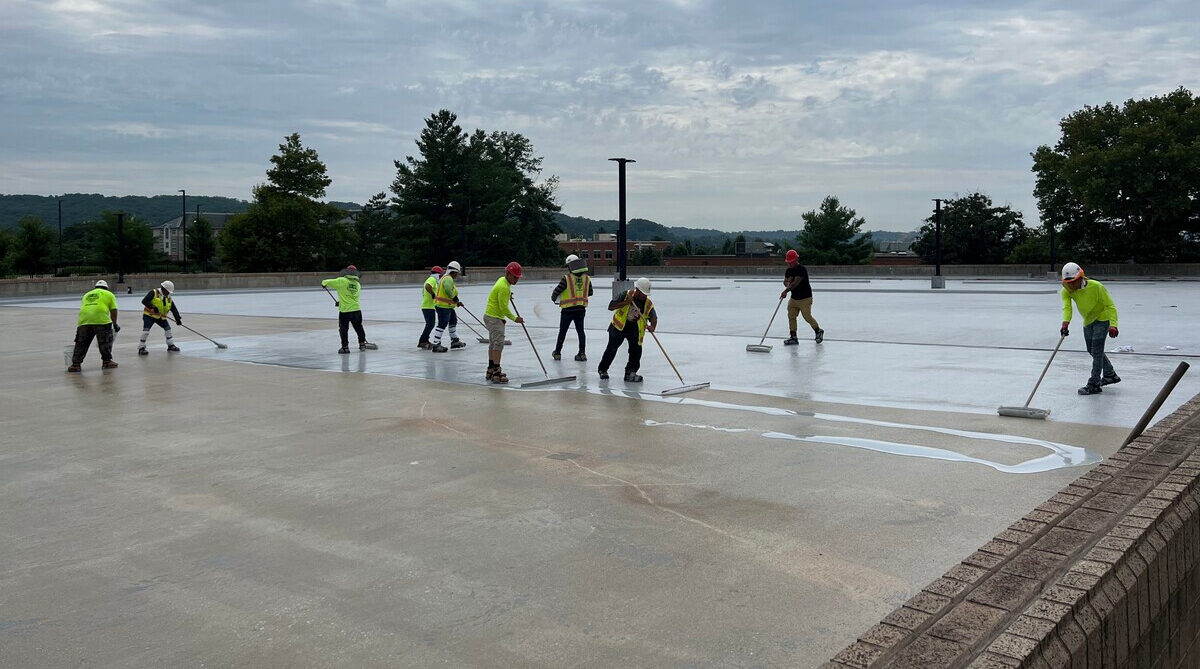Winterize Your Property: Essential Waterproofing Tips for the Cold Months
Winters are becoming increasingly unseasonable, and the data clearly reflects this trend. Last January set new records, with temperatures 2.29°F above the 20th-century average— the hottest January in 175 years of recorded history. Furthermore, 85% of Americans have recently experienced at least one unusually warm winter day.
However, it’s not the unseasonably warm weather that should be cause for concern. Whether you are a building owner or property manager, the significant temperature fluctuations from warm to cold pose a serious risk to your property, commonly referred to as the freeze-thaw cycle. Water infiltrates the smallest crevices in your building’s structure when temperatures alternate between wet and freezing conditions. Then it expands as ice, slowly but surely chipping away at brick and mortar.
Are you staying on top of this silent freeze-thaw destroyer? Your property may have even sustained damage without you even realizing it. In this article, we will discuss how to waterproof your building effectively before the next cycle hits.
The Freeze-Thaw Cycle’s Impact on Buildings
As winter approaches, water can become one of a building’s greatest threats. The freeze-thaw cycle transforms moisture into a damaging force capable of compromising even the most resilient structures. Here’s how this sneaky process works and steps you can take to safeguard your property.
Cracks, Expansion, and Structural Mayhem
Water seeps into tiny cracks in your building’s concrete or rock. When temperatures drop below 32°F (0°C), that water freezes and expands by 9%. It might not sound like much, but this expansion packs a punch, widening those cracks bit by bit. As the ice melts, water penetrates deeper, setting the stage for even more damage when the next freeze hits.
For buildings, this means weakened foundations, crumbling walls, and potential structural failure if left unchecked.
Waterproofing: Your Building’s Shield Against Nature
So, how do you fight back against the freeze-thaw cycle? Waterproofing creates a barrier that stops water from infiltrating your building’s vulnerable spots and cuts off the problem at its source.
Effective waterproofing also guards against mold and mildew growth, improving indoor air quality and creating a healthier environment. Plus, it’s a smart financial move— proper waterproofing can boost your property value by up to 25% and slash energy costs by 10-15%.
Various waterproofing methods exist to suit different needs, from membrane systems to cementitious compounds. The key is choosing the right approach for your building’s vulnerabilities, whether the foundation, roof, or perpetually damp areas below ground level.
How to Waterproof Your Building: 6 Winter-Ready Tactics
As the weather chills, it’s time to think about waterproofing your building for the impending winter. Consider the six practical strategies below to keep your structural integrity:
1. Conduct a Comprehensive Physical and Visual Assessment
Protecting your building from winter’s harsh elements begins with a thorough physical and visual assessment. Start by conducting a meticulous exterior inspection, using binoculars to examine every nook and cranny. Look for loose, spalling, or missing bricks, stones, mortar, and masonry. Don’t forget to check terracotta elements, cornices, windowsills, balconies, and railings. And while you’re at it, test all doors and windows for proper sealing and functionality. Finally, pay special attention to the roof and drain assemblies, as these are crucial in directing water away from your structure.
2. Perform Strategic Localized Facade Repairs
Once you’ve identified potential weak points, it’s time to perform localized facade repairs. While the end of the year can be challenging for large capital projects, it’s an ideal time for essential maintenance. Focus on replacing failed or deteriorating sealants at expansion joints, around through-wall penetrations, and window and door perimeters. Don’t hesitate to repoint and replace bricks as needed. These seemingly small repairs play a critical role in keeping moisture out of your building. Consider partnering with a trusted contractor and engineer to develop a comprehensive scope of work and phasing plan that aligns with your priorities and budget.
3. Proactive Maintenance for Parking Structures
Parking garages, often overlooked in maintenance schedules, endure significant wear during winter months. Exposed to snowplows, studded tires, and deicing chemicals, these structures require regular inspections and timely upkeep. A thorough examination should assess cracks in concrete or coating, blisters, delamination, leaks, expansion joints, drainage systems, and structural movement. Maintenance can range from general cleaning to remove debris that accelerates wear, to minor repairs addressing cuts, tears, and delamination in the base, intermediate, and top coats. High-traffic areas or zones prone to becoming slippery may need additional topcoats or enhanced texture to improve safety during wet conditions.
4. Winter Preparation and Snow Management
Preparing a parking garage for winter involves strategic snow and ice removal practices as excessive accumulation can overburden the structure beyond its design limits, necessitating careful removal. However, conventional metal blades and shovels risk damaging the traffic-bearing membrane, creating entry points for water and corrosive salts. So be sure to equip snowplows, buckets, and shovels with rubber blades and plastic runners and avoid metal implements entirely. Proper training of snow removal crews is essential to prevent inadvertent damage. Post-winter maintenance should also include thorough washing and sweeping to eliminate residual salts and sand that could erode the traffic coating over time.
5. Cold Weather Waterproofing Techniques
As temperatures drop, waterproofing efforts face unique challenges. Many sealants, coatings, and concrete products have specific ambient temperature requirements for installation, often exceeded by winter conditions. However, the industry has developed specialized low-temperature products, additives, and best practices to facilitate cold-weather work. When planning repairs or installations during colder months, careful consideration must be given to the type of work, ambient conditions (both temperature and moisture), and the potential long-term impact on the longevity of repairs. Adapting to these conditions is crucial for the effectiveness and durability of waterproofing efforts in challenging weather.
Proactive Planning for Future Capital Projects
Winter is the ideal time to start planning for next year’s capital projects. Spring is a peak season for construction and renovation, and contractors’ schedules fill up quickly. By initiating discussions, scheduling inspections, and planning assessments early, you can secure a spot on the calendar in advance and avoid the pressure of compressed timelines.
Planning ahead not only keeps your project on schedule but also provides the flexibility to complete it under optimal conditions. Waiting too long may push your project into next year’s winter months, which could potentially lead to weather-related complications. Contact us to start planning now and help ensure your property’s maintenance and improvement projects are executed seamlessly.




